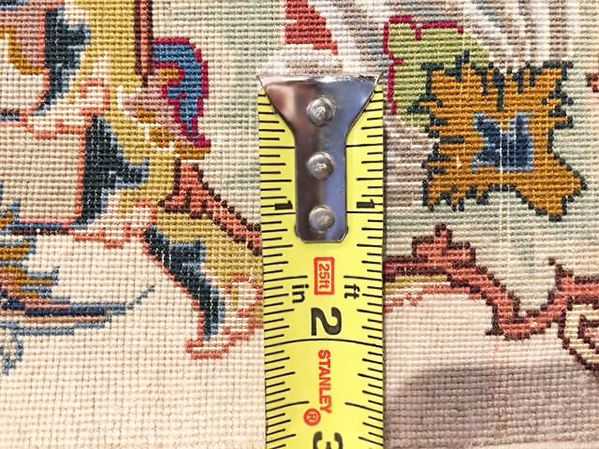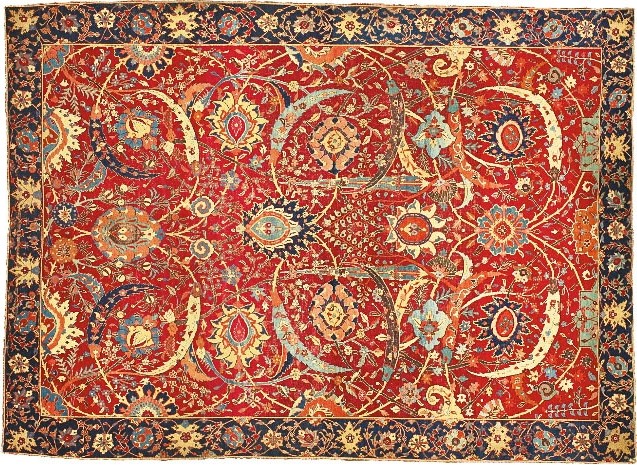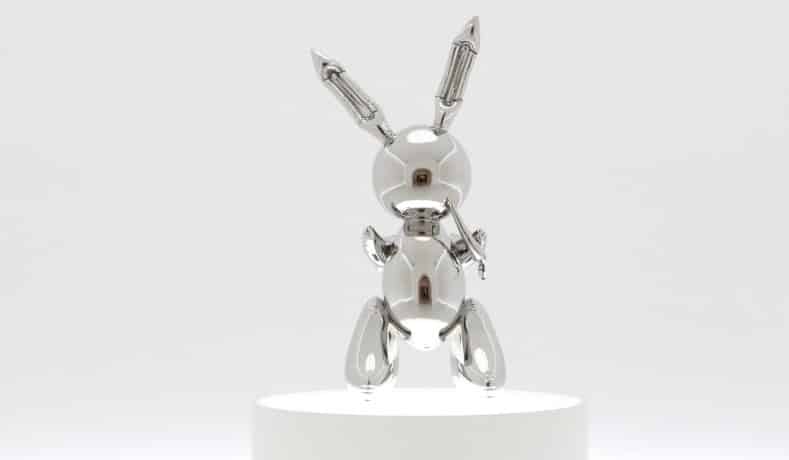Are Rugs Really Expensive Or Are They Fairly Priced
This article is part of: All the Questions You May Have About Rugs and Carpets
You may also want to read: Why are some area rugs so cheap?
Are rugs really expensive?
The most common question that people ask when shopping for area rugs is “Why are rugs so expensive”? But are rugs really expensive? Handmade area rugs are created by skilled weavers and anything that is made by hand will take time to create. Naturally, the longer things takes to make, like very high quality fine weave rugs, the more they will cost.
Exploring the artistic and historical values of rugs
To even ask a question like “why are rugs so expensive” is to reduce these historically significant works of art to their most basic and utilitarian function. It is to ignore the artistic value of these masterpieces entirely.
Fine handmade rugs, especially the antique rugs, are much more than just pieces of furniture. They are the combination of many hours of hard work, masterful artistry and the culmination of thousands of years of tradition.

Why Are Rugs So Expensive?
Let us take a look at some of the factors that influence the price of rugs and see “why are rugs so expensive”
What Determines the Value of A Rug?
The first point that needs to be made when tackling the issue of why are rugs so expensive, is that hand knotted and finely woven rugs differ significantly from machine made rugs. Each one is an individual work of art, even if the rug weaver used time honored designs and techniques. Human hands tied every single knot in the rug. Human hands also dyed and spun the wool, silk and cotton that went into it. Each knot was a conscious decision on the part of the weaver. This makes the carpet much more than a simple piece of fabric. It makes it an extension of the personality of the designer and weaver.
The value of the rug is determined by several different factors. One of the most common that people think of is the knot density. This refers to the number of knots per square inch, or other unit of measure. While knot count is important, it is not important for the reason that most people think. Those with a higher knot count took longer to make.

Knots per Square Inch
However, the knot count is also important for another reason. It allows the designer to make a rug that has a higher level of detail than one with a lower knot count. This can be compared to looking at a high definition graphic with a higher number of pixels per inch as compared to a lower pixel density composition. A high knot count allows the rug artist a considerably higher range of artistic expression, shading and detail. It allows them to create designs that are not possible with lower knot counts.
Beyond knot count, the pattern of the rug, the rarity of the design, the colors used and if the rug designer is well-known all go into valuing the worth of a rug. In addition, one has to consider the antique value. While not always the case, the older and earlier rugs, tend to be more rare and as a result, more valuable. Although a fine rug that will last for hundreds of years, wool, silk, the rug dyestuffs and materials are still organic and will eventually break down. This means that as time goes on many of these beautiful historical antique rugs will inevitably disappear.
In June of 2013, a 17th century rug with a sickle-leaf design brought $33.7 million at Sotheby’s Auction House and became the most expensive rug ever sold at auction.The factors that went into this decision included the condition of the rug for its age, its actual age, the design, the historically significant provenance and the overall artistic appeal of the carpet. This was indeed a rare piece and carpets such as these are considered world treasures that are as valuable as any other artifact that is still around from the 1600’s and the time of the Golden Age of the Safavid Empire. It is difficult to even put a price on an antique such as this.

The most expensive rug ever sold.
Learn more about How are Carpet and Rug Prices, Costs and Values Determined?
How do you know if a rug is expensive?
There are several factors that can determine whether a rug is expensive or not.
Here are some of the most common factors to help determine of a rug is expensive or not:
- Material: Rugs made from the best materials like silk, tend to be more expensive than those made from lower grade materials.
- Knot count: A rug’s knot count refers to the number of knots per square inch. The higher the knot count, the longer it took to weave, which typically means a higher price tag.
- Size: Larger rugs tend to be more expensive due to the amount of material and labor required to create them. This is most commonly true when dealing with modern area rugs.
- Age – Older antique rugs tend to be more rare and expensive than newly made rugs.
- Rarity – The best examples of their kind are always more rare. As a result the rarer area rugs are far more desirable which makes them far more expensive.
Keep in mind that while these factors can give you an idea of whether a rug is expensive or not, there are no set rules. The price of a rug can vary widely based on the specific factors mentioned above, as well as other factors such as where it was made, the age of the rug, the condition and the rarity and / or historical significance rug.
What Goes Into Making These “Expensive Rugs”?
The artistic value of the more expensive rugs plays a role in their value, as does their age and condition. However, even if one only considers the utilitarian nature of the rug, many of them are still under priced. If it is fine, even a small 3′ x 5′ carpet can take several months to weave. This means a minimum of 7 to 8 hour day goes into just tying the knots. This does not include the effort that went into caring for the sheep, growing the cotton, or waiting for the silk worms to work their magic and produce a cocoon.
Next, there is the laborious process of spinning the wool or other fibers and dying them. Only recently has this process been mechanized, but in many traditional tribal cultures, it is still done using a hand spindle. Using this method, it takes approximately 7 to 8 hours of spinning to do one hour of weaving.
A large size carpet takes even longer to produce, with some of the palace oversized rugs taking one to two years if not longer to complete. In many cases, especially with antique rugs, there were no weekends off, and weaving these carpets was an all day, every day and sometimes an around the clock affair.
The fastest rug weavers can produce about 6 knots a minute, which is 360 knots an hour, but weavers of such skill are rare. On average, a 9’x12′ room size rug at 500 knots per square inch (which is not especially fine but not commercial or coarse weave quality) takes 4-5 weavers working 6 hours a day for 6 days a week about 14 months to complete. That is over 12,000 working hours to produce the average quality carpet.
Let’s say that the artisans are only paid US minimum wage to produce these magnificent works of art. That comes to about $103,420 dollars just for the labor alone. Keep in mind that at this point, only the weavers have been paid, not the farmers, spinners and dyers. Some fine carpets can have well over 1,000 knots per square inch. You can easily see how this adds up for a 19′ X 22′ masterpiece rug by Ustad Mohtashem who produced extremely fine Persian Kashan rugs in the late 18th century. Typically, the price does not even cover the labor and materials involved to create the carpet.
By comparison, the modern rug making machine has 1,200 needles across and can do about 3,600 tufts per minute. Modern carpet manufacturers can crank out several hundreds of square yards of carpet per day. This is one reason why modern manufactured synthetic machine made carpets are much cheaper than hand knotted ones, but they lack something that only a hand knotted carpet can bring. They lack the human factor and the individual artistry that goes into a hand-knotted carpet.

Rug weavers hand making rugs.
Each Rug Is A Masterpiece
Those people who ask why are rugs so expensive do not take the time to stop to think about what goes into making a hand knotted carpet. However, the value does not stop there. It has already been mentioned that antique area carpets are bound to be more expensive than new ones, but that is not say that many new carpets are any less of a work of art.
Learn more about why buying modern rugs may cost you more than buying antique rugs
A beautiful carpet can be compared to a work of art by famous artists. Carpets by historical master weavers such as Ustad Mohtashem, Haji Jalili, Aboul Ghasem Kermani are as important as the works of famous painters such as Matisse, Picasso, and Van Gogh.
People think nothing of paying millions of dollars for a Picasso, but they still scoff at a couple thousand for a fine art rug. Weaving is a deliberate art. That is not to say that painting is not, but weaving a carpet means the artist must set an intention and remain committed to the design for a long period of time, sometimes years. In addition, many of them must go through years of formal schooling and apprenticeship to learn their art.
What are some of difference between cheap rugs and expensive rugs?
The things that may make certain area rugs cheap can be:
- Material: Cheap rug weaving martials will generally be sourced when trying to make cheap rugs.
- Craftsmanship: Cheaper rugs are often machine-made rugs or mass-produced items.
- Quality of Weave: Cheap rugs will not be as finely woven as more commercial rugs.
- Design and Pattern: Cheaper rugs may have simpler or repetitive designs that thew weavers can create with relative ease and speed. Cheap rugs will have far less attention to detail.
- Durability: Due to the reasons listed above, cheaper rugs may wear out more quickly and will need to be replaced frequently.
- Good quality rugs are durable and could last centuries. Cheap rugs may only last a few years before they would need to get replaced.
The above are just a few of the factors that separate the expensive rugs from the more commercially made cheap rugs.
Where do the most expensive rugs come from?
The most expensive area rugs in the world are often associated with countries in the Middle East and Asia, particularly Iran, Turkey, and China. These regions have a long history of producing high-quality rugs using traditional methods and materials.
- Iran / Persia is known for producing some of the world’s most valuable, exotic and sought-after area rugs. These include the fine silk Persian rugs which feature intricate designs.
- Turkey is also a major producer of high-quality rugs, particularly those made in places like Oushak and Hereke.
- China is another major producer of good area rugs, particularly those made using silk fibers. Chinese rugs, especially their silk rugs are prized for their intricate designs and exquisite craftsmanship.
Overall, the value of a rug depends on various factors such as the materials used, the intricacy of the design, the age and rarity of the piece, and the reputation of the maker or region where it was produced.
Prices In The World of Fine Art / Vs Area Rugs – Who Is Expensive Now????
Compared to other art pieces for the home, carpets are relatively inexpensive, and as one can see, they hardly even cover the effort that it takes to produce them. The world of fine art is a fickle place to say the least. In 2019, a three-foot tall stainless steel rabbit made to look like a child’s toy balloon sold at Christie’s auction house for $91,075,000. This was applauded by the art world. What is even more fascinating about these works is that the artist, Jeff Koons, does not create many of the actual sculptures himself. He has a team do it for him and just oversees the process and adds his signature when they are done.

Jeff Koons’ Rabbit Sculpture
Yet, a 16th century rug sells at auction for 34 million and the art world proclaims it to be outrageous. You can easily spend close to $1,000,000 on an ornate antique frame for a painting, which makes $50,000 for a one-of-a-kind masterpiece rug seem cheap, especially when you consider the rarity and the effort that went into producing it.
A carpet is the one of the most important items that you will purchase for your home. The perfect rug sets the tone of the interior design and transforms it into a restful sanctuary. Buying a rug is buying an artwork. When one compares the price of a hand-knotted carpet, it is not expensive at all in the world of fine art.
Now that you can appreciate the effort that goes into these works of art and where they fit into the world of find art, you may want to reevaluate your original question of why are rugs so expensive.
Browse our rugs online and take a look at the wonderful masterpieces that we have in our collection. A hand-knotted carpet is an investment that will last for a lifetime and beyond. You just might find the perfect piece of art that you have been searching for to complete your room.
Here are some less expensive area rugs from our collection:
This rug blog which answered the age old question: “Why Are Rugs So Expensive?” was published by Nazmiyal Antique Rug Gallery In NYC.











